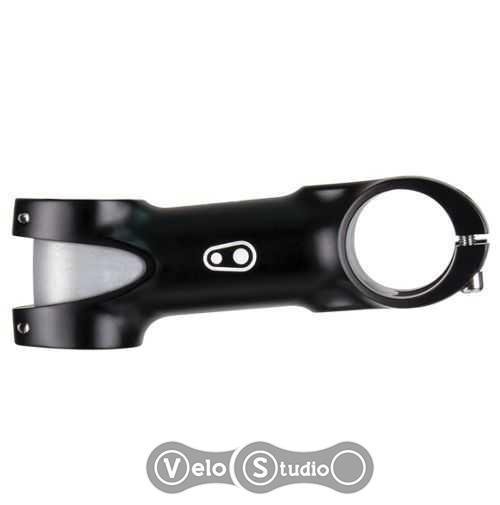


 |
 |
 |
|
#1
|
||||
|
||||
|
Why don't faceplates get cut on an angle?
Another "deep thought" while riding my bike.
As I lean down on my Zepp stem, I'm exerting a lot of pressure on the faceplate retaining screws. I assume the stem starts out as a solid piece of aluminum, then the excess gets machined away. Cut the faceplate, drill crew holes, you're more or less done. But way back in the day I had a Cinelli Alter that had a faceplate which came down on an angle - so the bars were cradled, and my weight came down more on the stem, less on the hardware. Doesn't that seem like a more sensible design? |
|
#2
|
|||
|
|||
|
Quote:
In addition, I'm not sure that the angled faceplate is actually that much stronger. Some of the largest handlebar forces can be upward (as when pulling on the bars), and more importantly, forces on the handlebar are often highly offset, resulting in a large bending moment on the bars (for example, when rocking the bike in a sprint, and alternating pulling on opposite sides of the bar). These rocking alternating forces pulling on the par would put the entire load on the bolts, magnified by the lever arm of the handlebar. One design which addresses your concerns are the Ritchey C260 stems, which wraps the bars for a complete 260 degrees:  This design minimizes the loading on the bolts, and if the bolts (or faceplate) do actually break, it the handlebar will remain attached to the stem (although the handlebar will be free to rotate in the stem clamp). |
|
#3
|
||||
|
||||
|
Ah yes, the flipability, didn't consider that.
|
|
#4
|
|||
|
|||
|
I really like those Ritchey stems
|
|
#5
|
|||
|
|||
|
The stem on my MTB doesn't ask that question:

|
|
#6
|
||||
|
||||
|
Are you concerned with the screws pulling out, or something?
I'd put $100 on 4 faceplate screws having higher pullout strength than any part of the stem's sheer strength. Screws are strong, with regard to shank direction loads. ---- In alpine climbing, we have objects called "ice screws," used for intermediate protection whilst "lead climbing," and for building belay anchors and stuff. Tests have shown that ice screws driven into an ice wall at a 10-15% upward angle from vertical plane offers the highest strength, despite traditional/common misbelief that driving them into the wall at a slight DOWNward angle would offer the best "strength." but ice sheers very easily - its strength, and subsequently the ice screw's strength, rests on pullout. NOT sheer. Like brittle, porous metals...... like cast aluminum. -------------------- and I know from construction that you have two kinds of simple (non mechanical) fasteners - nails, which offer sheer strength; and screws, which offer pullout strength. Use nails when forces are sheer, use screws when forces are perpendicular to the mounting surface. You CANNOT use screws for things like sheerwall, roof decking, deck decking, hurricane ties, joist/perlon hangers, etc, etc, etc. They will just straight up break if you try to hold sheer stress with them. Likewise.... 12 or 16D coated nails have great sheer strength, but you'll never use them for expansion load fastening.
__________________
where are we going, and why am i in this handbasket? |
|
#7
|
||||
|
||||
|
No, not concerned at all. Just jabbering, as usual.
|
|
#8
|
|||
|
|||
|
Quote:
When open face stems were first introduced, many used a two bolt face plate. These were found to be prone to bolt failure, and if a single bolt failed, the handlebar completely detached from the stem (I witnessed several failures of this type). 4 bolt face plates are now the norm. Not only are these less likely to fail, but it requires a failure of at least two bolts before the handlebar detaches. |
|
#9
|
||||
|
||||
|
I don't believe the bolt strength is in question but rather the aluminum that the bolts are threaded into. In sheer the aluminum will give way long before a steel or Ti bolt.
|
|
#10
|
||||
|
||||
|
Quote:
Then again, I read it on the internet, so who knows how reliable that info is. |
|
#11
|
|||
|
|||
|
I've seen cases where either the bolt or the faceplate failed.
|
|
#12
|
|||
|
|||
|
Quote:
|
|
#13
|
||||
|
||||
|
Quote:
Deda Newton: I cannot count how many cracked face-plates occurred. |
 |
| Thread Tools | |
| Display Modes | |
|
|